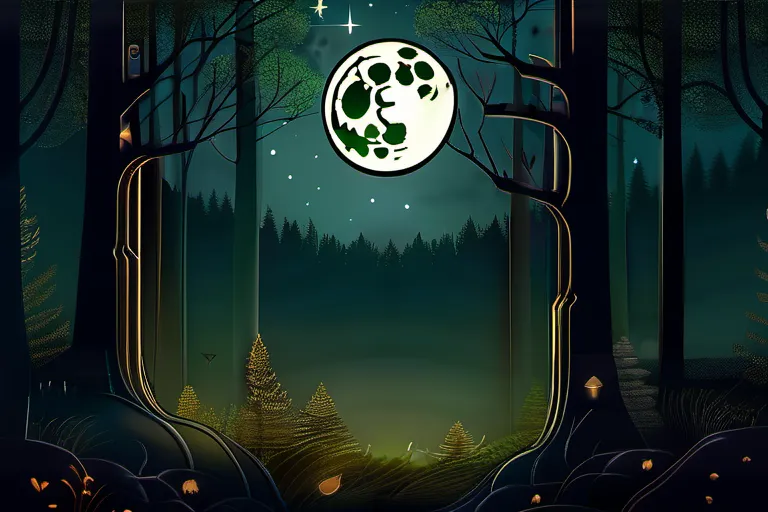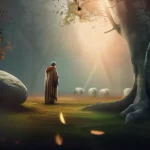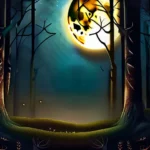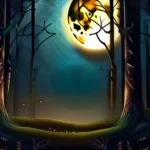Explore the fundamental principles, practices, and deities of modern pagan religions.
Neo-paganism is a contemporary spiritual movement that encompasses various beliefs and practices rooted in ancient pagan traditions. In this article, we delve into the core beliefs, practices, and deities of neo-paganism to provide you with a comprehensive understanding of this fascinating religion.
The Roots of Neo-Paganism: A Historical Overview
The Roots of Neo-Paganism: A Historical Overview
Imagine stepping back through time, from the bustling streets of today to the quiet, contemplative temples of ancient civilizations. How did these distant cultures’ reverence for nature evolve into the vibrant spiritual movement we know as neo-paganism? Let’s delve into this fascinating journey.
Neo-paganism traces its roots deep into history, where it intertwines with the very fabric of our earth itself. Think of the old stone circles as if they were giant clocks marking time and the cycles of nature. What stories do these stones tell about our ancestors’ connection to the divine?
The revival movement began in the late 19th century, gaining momentum in the mid-20th century. It’s like a spark that ignited from a long-dormant flame, rekindling ancient rituals and beliefs. But why did this happen? Was it merely a response to the rationality of modern times, or was there something deeper stirring within human hearts?
The early pioneers of neo-paganism were drawn to these ancient traditions for various reasons—perhaps a yearning for the spiritual depth they perceived in past cultures, or an escape from the mechanized, soulless world of industrialization. But what does this mean for us today? How can we connect with these roots and find meaning in our modern lives?
The history of neo-paganism is a rich tapestry woven with threads from various ancient traditions. It’s like piecing together a puzzle where each piece offers a glimpse into the past, yet the full picture remains elusive until all are put in place. By understanding these origins, we can better appreciate the depth and complexity of this modern spiritual movement.
The Core Beliefs of Neo-Paganism: A Spiritual Journey
The Core Beliefs of Neo-Paganism: A Spiritual Journey
Imagine standing under the vast, open sky, feeling the wind rustle through your hair as you gaze at a breathtaking sunset. In this moment, you feel a profound connection to nature and a sense of awe that transcends ordinary consciousness. This is not just a fleeting experience; it’s a core belief in neo-paganism, where nature is revered as a sacred presence, and the natural world is seen as a living, breathing entity that holds ancient wisdom.
But why does this connection to nature hold such importance? Is it merely about appreciating beauty or understanding ecological balance? For neo-pagans, nature worship goes beyond aesthetics. It’s a spiritual practice rooted in the belief that all living things have inherent value and are interconnected in an intricate web of life. This perspective fosters a deep respect for the earth and encourages sustainable practices.
Another fundamental aspect of neo-paganism is self-discovery. The journey towards understanding one’s own spirituality is likened to embarking on a personal odyssey, much like Odysseus navigating the waters of his soul. This path often involves exploring different belief systems and practices to find what resonates most deeply within oneself. It’s about discovering not just who you are but also why you believe in certain things.
Deities play a crucial role in neo-paganism, serving as spiritual guides or embodiments of natural forces. These deities, often representing aspects of nature such as the sun, moon, seasons, and elements, offer guidance and support on the spiritual path. By worshipping these deities, practitioners feel connected to something greater than themselves, drawing strength from their wisdom and power.
So, how do you navigate this rich tapestry of beliefs? It’s about embracing the journey, being open to new experiences, and finding your place within nature’s vast, mysterious framework. The path may be winding, but it leads to a deep, personal understanding that enriches your life in ways both tangible and intangible.
Neo-Pagan Deities: Who Are They and What Do They Represent?
Neopagan deities are like the stars guiding our spiritual journey, each representing different facets of life and nature. Who are these beings that hold such power in our beliefs? How did they come to be a part of this ancient yet modern path?
Let’s delve into some of the most prominent deities worshipped in Neopaganism. Consider Apollo, the Greek god of prophecy, music, and poetry—essentially embodying the arts and knowledge. In Neopagan practices, he often represents wisdom and clarity. Can you imagine how seeking his guidance might be like trying to find the perfect melody amidst chaos?
Or consider Hecate, the goddess of magic, witchcraft, and the crossroads—she is a complex figure who can bring light or darkness depending on one’s intentions. Hecate serves as both protector and guardian, guiding souls through life’s transitions. Think about how she might be like a lighthouse in a stormy sea, helping us navigate the turbulent waters of existence.
Then there’s Dionysus, known for his role in wine, fertility, and ecstasy—symbolizing joy and liberation from societal constraints. His followers often celebrate him through revelries and rites, seeking to break free from the chains of convention. Is it possible that by honoring Dionysus, we are embracing a more authentic self?
Lastly, let’s not overlook Morrigan, the Irish goddess associated with war, fate, and sovereignty—she is fierce yet wise, often seen as a shape-shifter who can take many forms. In Neopagan circles, she represents power and resilience. Could there be any greater ally in facing life’s challenges than one who embodies strength and courage?
Each of these deities offers us a glimpse into the complex tapestry of Neopaganism, weaving together threads of history, mythology, and personal belief. As we honor them, we also honor the natural world and our place within it.
Neo-Pagan Practices: Rituals, Spells, and Magick
Imagine stepping into a circle of stones, surrounded by the whispering wind and the rustling leaves. This is where neo-pagans often perform their rituals, connecting with the earth and the divine in a sacred space. Rituals are at the heart of neo-pagan practice, serving as a bridge between the mundane and the mystical. How do these rituals work? Is it just about chanting and dancing around a fire?
Rituals for neo-pagans are like weaving a tapestry; each thread adds to the whole. They often involve symbolic actions, invocations, and offerings to honor deities or connect with nature. For instance, during a ritual of harvest, participants might gather around to thank the earth for its bounty, using herbs, grains, and other natural elements in their ceremony.
Spells are another fascinating aspect of neo-paganism. These aren’t just about changing your luck; they’re more like focusing one’s intentions into a powerful tool. Do you ever wonder how to create a spell? It involves choosing the right ingredients—herbs, crystals, or symbols—and setting clear intentions. Think of it as crafting a potion that aligns with your wishes. How can we use spells in our daily lives without misusing their power?
Magick, often referred to simply as magick, is the art and science of changing consciousness at will. It’s about tapping into the unseen forces around us. Neo-pagans believe that by understanding these forces, they can harness them for personal growth or community benefit. Is magick just another word for magic? Not quite; it’s a deeper exploration of reality itself.
Through rituals, spells, and magick, neo-pagans find ways to engage with the divine in their daily lives. These practices are not mere rituals but expressions of spirituality that blend ancient wisdom with modern understanding. They seek to live harmoniously with nature and draw strength from its cycles and rhythms. In this journey, every act becomes a step towards deeper connection and transformation.
The Role of Nature in Neo-Paganism: Living in Harmony
The Role of Nature in Neo-Paganism: Living in Harmony
Imagine stepping into a sacred grove, surrounded by towering trees that seem to whisper ancient secrets. In neo-paganism, nature is not just a backdrop; it’s the heart and soul of their beliefs. How do neo-pagans view this relationship with the natural world? Is there something deeper at play than mere respect for flora and fauna?
Nature in neo-paganism is like a living, breathing entity, teeming with spirits and deities. Many neo-pagans believe that every tree, river, and mountain has its own spirit or deity. This belief stems from the idea that the natural world is not merely physical but spiritual too. How do these beliefs influence their daily lives? Do they see themselves as stewards of nature rather than dominators?
Neo-pagans often engage in practices that honor and celebrate the earth, such as planting seeds or participating in harvest festivals. These rituals serve to remind them of their interconnectedness with nature. But why is this connection so crucial for neo-pagans? Could it be a way to find balance in a world that often prioritizes technology over the natural environment?
Consider the metaphor of a tree: its roots delve deep into the earth, drawing nutrients and water from below, while its branches stretch toward the sun. This interdependence mirrors how neo-pagans view their relationship with nature. They strive to live in harmony, respecting both the visible and invisible aspects of the natural world.
How do you feel when you walk through a forest or gaze at rolling hills? Do these experiences inspire a sense of wonder and connection? Neo-pagans would argue that this is more than just an emotional response; it’s a profound understanding of their place in the grand tapestry of life. Can we learn from their approach to nature, adopting practices that promote sustainability and respect for our environment?
Neo-Pagan Community: Finding Your Tribe
Imagine stepping into a labyrinth where every turn reveals a new path, a new community, and a fresh perspective on neo-paganism. In this vast landscape, you’ll find a myriad of tribes, each with its own flavor and focus within the neo-pagan movement. But how do you navigate through these diverse paths to find your tribe? How can you ensure that you’re surrounded by like-minded individuals who share your beliefs and values?
One of the first steps is understanding what defines a neo-pagan community. These communities are often united by a shared reverence for nature, ancient traditions, and a desire to reclaim and honor pre-Christian spiritual practices. However, within this broad umbrella, there’s an incredible diversity. Some focus on specific deities or pantheons, others embrace earth-based spirituality, while still, some might be drawn to magical practices.
To find your tribe, start by exploring local groups or online forums where you can engage with fellow neo-pagans. Attend festivals and workshops; these are great opportunities to meet people who share your interests. Social media platforms like Facebook and Reddit also offer spaces for discussion and connection, making it easier than ever to discover communities that resonate with you.
Remember, finding a community is about more than just agreeing on beliefs; it’s about feeling seen, accepted, and part of something bigger. In the context of neo-paganism, this tribe can provide support, guidance, and a sense of belonging – qualities that are invaluable in navigating the often complex spiritual journey.
So, as you embark on your quest to find your tribe, ask yourself: What draws me to neo-paganism? Am I drawn to specific deities or rituals? Do I value nature’s teachings and embrace its cycles? Answering these questions can help you narrow down the communities that might be a perfect fit for you. And once you’ve found your tribe, embrace it fully, knowing that in neo-paganism, there’s always a place for you to belong.
Conclusion
 By the end of this article, you will have gained valuable insights into the core beliefs of neo-paganism. You’ll understand its connection to nature, the role of deities, and the importance of self-discovery in this spiritual path. Embrace your curiosity and join us on this enlightening journey.
By the end of this article, you will have gained valuable insights into the core beliefs of neo-paganism. You’ll understand its connection to nature, the role of deities, and the importance of self-discovery in this spiritual path. Embrace your curiosity and join us on this enlightening journey.











